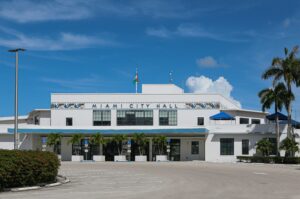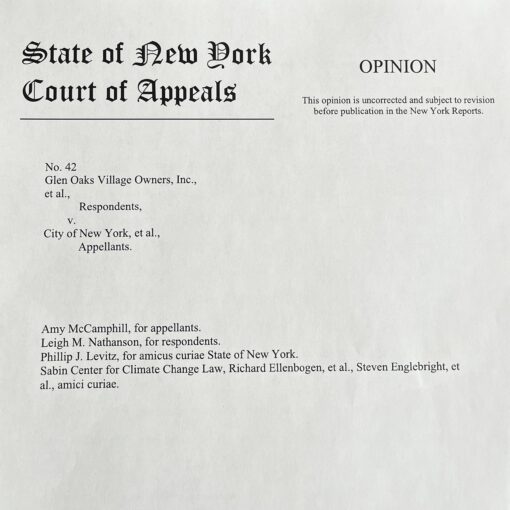 In the nine months since President Biden signed the Inflation Reduction Act (IRA) into law, much has been made of the law’s potential to fund, support, and catalyze local climate action (including by me). The IRA promises to be transformative for climate action at the local level and beyond. Still, some gaps in implementation remain, and advances like the release of programmatic details from federal agencies, the proliferation of IRA guidebooks and other reference materials, and the increasing state and local resources aimed at tapping the new law’s funding have not fully positioned local governments to take maximal advantage. That’s not to discount the invaluable work being done in this space; continued federal and state support and outside technical assistance are critical to local governments navigating the IRA’s many opportunities. But there is a lot more to do.
In the nine months since President Biden signed the Inflation Reduction Act (IRA) into law, much has been made of the law’s potential to fund, support, and catalyze local climate action (including by me). The IRA promises to be transformative for climate action at the local level and beyond. Still, some gaps in implementation remain, and advances like the release of programmatic details from federal agencies, the proliferation of IRA guidebooks and other reference materials, and the increasing state and local resources aimed at tapping the new law’s funding have not fully positioned local governments to take maximal advantage. That’s not to discount the invaluable work being done in this space; continued federal and state support and outside technical assistance are critical to local governments navigating the IRA’s many opportunities. But there is a lot more to do.
There remain legal and structural barriers to full IRA implementation at the local level. And though federal, state, and local climate action are often positioned as separate from one another, the IRA embodies a relatively new, federalist model. Local, state, and private sector implementation is the core of the IRA. Local governments, in particular, are eligible for about a dozen grant programs; they will take on an important new role in renewable energy financing (via changes to the tax code); they will direct resources within their communities; and they have the task of communicating to local residents and businesses and facilitating their access to IRA programs (among other things). To put it plainly, hurdles to local government IRA implementation are hurdles to IRA implementation economy-wide.
This blog post explores some of the key challenges and, where possible, makes suggestions for their resolution. Some obstacles to local implementation will be resolved with time. For example, the Treasury Department will issue further guidance on the IRA’s “direct payment” provisions; local governments will likely still need ample legal and technical guidance, but major questions about how direct pay will work will be resolved. Others will require larger systemic solutions, and much more funding.
Direct Pay: Lessening Barriers to Uptake
The IRA makes a change to the tax code that shifts the landscape considerably for local governments and other entities that do not pay taxes. Referred to as “direct pay,” the change allows local governments to access federal tax incentives as a cash payment rather than as a credit to income tax liability, which local governments do not have. Direct pay significantly lowers the barriers to entry for local governments looking to develop or invest in renewable energy projects, among other things. Whereas before a local government would have to enter into a potentially costly agreement to transfer a tax credit to a taxpaying entity, local governments and other non-taxpayers can now access these benefits directly.
Direct pay is good news for local governments, and for scaling up renewable energy development. There are, however, significant questions remaining about how it will work. The Treasury Department is expected to answer some of these in the coming months, as it releases more information about the program’s mechanics, including how eligible entities will request payments, what documentation will be required, and how long they will have to wait to receive funds to which they are entitled.
Even after the Treasury Department issues implementation rules and guidelines, barriers to the program may remain. For one, unless the Treasury rules allow access to direct payment amounts up front, local governments will have to pay out-of-pocket and wait to be reimbursed, or find another financing arrangement or funding source. In some places, this may not be possible or may require expensive concessions to project developers. State governments and federal agencies could consider low- or no-cost loan programs to fill this funding gap. For many local governments, understanding the tax benefits and implications of different kinds of clean energy projects may overwhelm local resources. Local governments considering very large utility-scale projects will need to hire counsel to advise them, but federal agencies, NGOs, industry groups, and other technical assistance providers could help local governments take full advantage of direct pay by offering resources that demystify the tax incentives available for smaller renewable energy projects and other items like commercial vehicles.
Greenhouse Gas Reduction Fund & Green Banks: Getting Money to Communities
Another much talked-about aspect of the IRA is the Greenhouse Gas Reduction Fund (GGRF). The GGRF is administered by the Environmental Protection Agency (EPA) and provides funding for so-called “green banks.” While that term does not appear in the IRA itself, it is now widely used to refer to new entities that will leverage public funding to attract private funding and advance green energy or energy efficiency projects. Over the last several months, local governments, states, and other stakeholders like community development financial institutions (CDFIs) have engaged in significant exploratory and advocacy work to understand and influence how these new green banks will be structured, operationalized, and funded. For much of this time, it was unclear whether the EPA would seek to fund one, several, or many green banks, and what kind of institutions were most likely to succeed in applications for funding.
At long last, the EPA issued its implementation framework for the GGRF in April 2023. From the framework and earlier guidance, it seems likely that EPA will take a regional approach to seeding green banks, which brings with it new questions about how local governments can ensure that green bank funds reach the communities that need them most. There are two aspects to the green bank program: a $14 billion National Clean Investment Fund (NCIF) program and a $6 billion Clean Communities Investment Accelerator (CCIA) program. (A third aspect of the GGRF, the Solar for All grant program, is not a green banking program.) The NCIF program targets large large- and utility-scale renewable energy and “clean technology” projects, while the CCIA program is meant to seed community-level clean energy and emissions-reducing projects. It is not yet clear what entities EPA will fund through these programs, nor how local governments might interface with them, advocate for their communities’ needs, and get dollars spent in them. The newness of green banking in many areas of the country and for many municipalities will amplify these uncertainties.
EPA can help ease some of these hurdles to local use of green bank services by selecting entities that can offer financing to local government renewable energy investments (through the National Clean Investment Fund program) and that have plans to partner with local governments and community groups to get financing to projects most in need. These entities will need to be held accountable to their commitments, both formally through accounting, reporting, and transparency regulatory requirements and by third parties monitoring their activities. Technical assistance providers can also help local governments understand how to navigate green banks to take advantage of financing programs, connect capital to local communities and projects that need it, set up their own grant- or loan-making entities, choose among financing options, and more. Some of this work can be done now, while much of it will have to wait until EPA selects the winners of the NCIF and CCIA programs.
Cities as Catalyzers: Outreach & Equity
In addition to financing, tax incentives, and grants for which local governments are directly eligible, the IRA aims much of its reach at private individuals and businesses. Households and building owners will be eligible for rebates under the HOMES and HEEHRA programs; residents can access tax incentives for the purchase of an EV; utilities and renewable energy developers have a range of new and expanded tax credits; renovators of commercial buildings can take tax deductions; and more.
Local governments are incentivized to communicate to residents and businesses the breadth of programs available to them. After all, the more individuals and businesses avail themselves of IRA benefits, the better for local decarbonization efforts as a whole. The problem is that these programs are numerous, complicated, and in some instances overlapping or mutually exclusive. In short, effective outreach may strain or be beyond local capacity. But implementation depends on someone understanding the IRA programs on offer and helping residents and businesses figure out which to use.
Difficulties in outreach and communication can have effects beyond suboptimal IRA uptake at the community level; they can lead to inequitable implementation as well, both within and across communities. Within communities, local governments who are unable to effectively conduct outreach may find that wealthier residents receive more benefits (as one overly simplistic example, home owners may take advantage of rebates and tax credits for building upgrades while renters remain at the whims of their landlords to make the same building upgrades). More broadly, local governments who can spend more resources on outreach in connection with IRA programs may see more uptake than those who cannot, leading to inequitable implementation.
Federal and state agencies and technical assistance providers can help close this gap by offering free, shareable resources that give everyone access to the same information about available programs. Local groups can help distribute these resources within communities. Even more helpful would be additional, funded, long-lasting capacity to offer ongoing outreach and support to local residents and businesses assessing which programs are best for them.
State Law: Limitations on Local Authority
Some local governments are inhibited from fully implementing the IRA in the same ways they are inhibited from undertaking other promising climate strategies: by state law limitations that preempt or prohibit them from certain kinds of action. For example, the IRA makes available $1 billion in funding for state and local governments to update their building energy codes to the latest International Energy Conservation Code and ANSI/ASHRAE/IES standards, or to a net zero building code standard. But many local governments lack building code authority, and therefore are neither eligible for this particular source of IRA funding nor able to advance its goals. States will fill this gap in some places (and a strong statewide code is a better use of IRA resources than disparate local ones), but there are many states with many-years-outdated building codes in which local governments do not have code authority. Local authority is limited by state law in many other ways; in particular, some local governments will lack authority to regulate air pollution, limiting the ways in which they might make use of programs like the climate pollution reduction grants (to be clear, local governments still have non-regulatory tools they can use in connection with this program). Many local governments will be unable to use the section 50152 grants to facilitate the siting of interstate electricity transmission lines, even though they are eligible, because they lack authority over transmission siting. Solving for this implementation gap is unlikely — if local governments had more authority for climate action, I’d likely be out of a job — but resources to help local governments and other stakeholders understand which IRA levers a local government can pull will be useful in making the most of available IRA resources.
Technical Assistance: Augment Capacity, Bolster Local Efforts, Offer Resources
A common thread among these challenges and uncertainties is strained local government capacity. The IRA offers several new grant programs for which local governments are eligible and makes a dozen tax incentives available to local governments through direct pay. Local governments also face a new and as yet uncertain financing landscape as a result of the GGRF’s green banks, and residents will need guidance on numerous new individual- and business-facing incentives. Many local governments will struggle to monitor grant opportunities, devote adequate staff time to developing grant applications, or find projects that are sufficiently advanced and adequately tailored to the specifics of a grant program. In some instances, local governments will forego certain grant opportunities altogether due to insufficient resources.
Technical assistance can help overcome some of this gap in capacity, but the scale and agility of the assistance needed is sweeping. With the exception of some of the largest, highest-staff cities, nearly every local government will have less than optimal capacity to respond to the IRA’s many opportunities. What’s more, there will be a wide range of needs; some cities and towns will be well-positioned to respond to IRA programs, if somewhat under-resourced, while others will need very granular help in navigating these programs. Ideally, technical assistance providers will be nimble enough to meet these varying needs, and will develop and make use of shared resources like the Sabin Center and EDF’s IRA Tracker and Database.
A more systemic approach might borrow from the Climate Pollution Reduction Grant (CPRG) program, a two-phase grant program combining formula-determined (i.e., non-competitive) planning grants ($250 million) and competitive implementation grants ($4.75 billion, minus agency administrative costs). Eligibility for the larger, competitive implementation grants depends on participation in the planning grant program, for which the country’s 67 largest Metropolitan Statistical Areas (MSA) are eligible. The CPRG effectively requires states and MSAs (i.e., groups of local governments) to engage in planning, and provides them funding to do so, in order to identify GHG-reducing projects for which they can submit a worthy application for competitive grant funding. Where allowed by law, federal agencies could offer funding designated solely for helping local governments identify projects that satisfy competitive grant opportunities. Other parties could offer this kind of funding or assistance as well.
This post does not mean to minimize the IRA’s potential or reach. The resources made available by the law are unprecedented and are a significant boon to local governments. Rather, it highlights the ways in which implementation will strain local resources and the need for action to avoid ineffective and inequitable implementation. Federal agencies, state governments, and nonprofit organizations and funders should consider how they might best contribute to closing these implementation gaps by helping local governments traverse new programs, bolster capacity, communicate with stakeholders, and access or facilitate access to funds. This shared project will require significant resources, but will help ensure the robust, equitable implementation of the IRA that all of our communities need.
Amy Turner is the Director of the Cities Climate Law Initiative at the Sabin Center for Climate Change Law at Columbia Law School.





